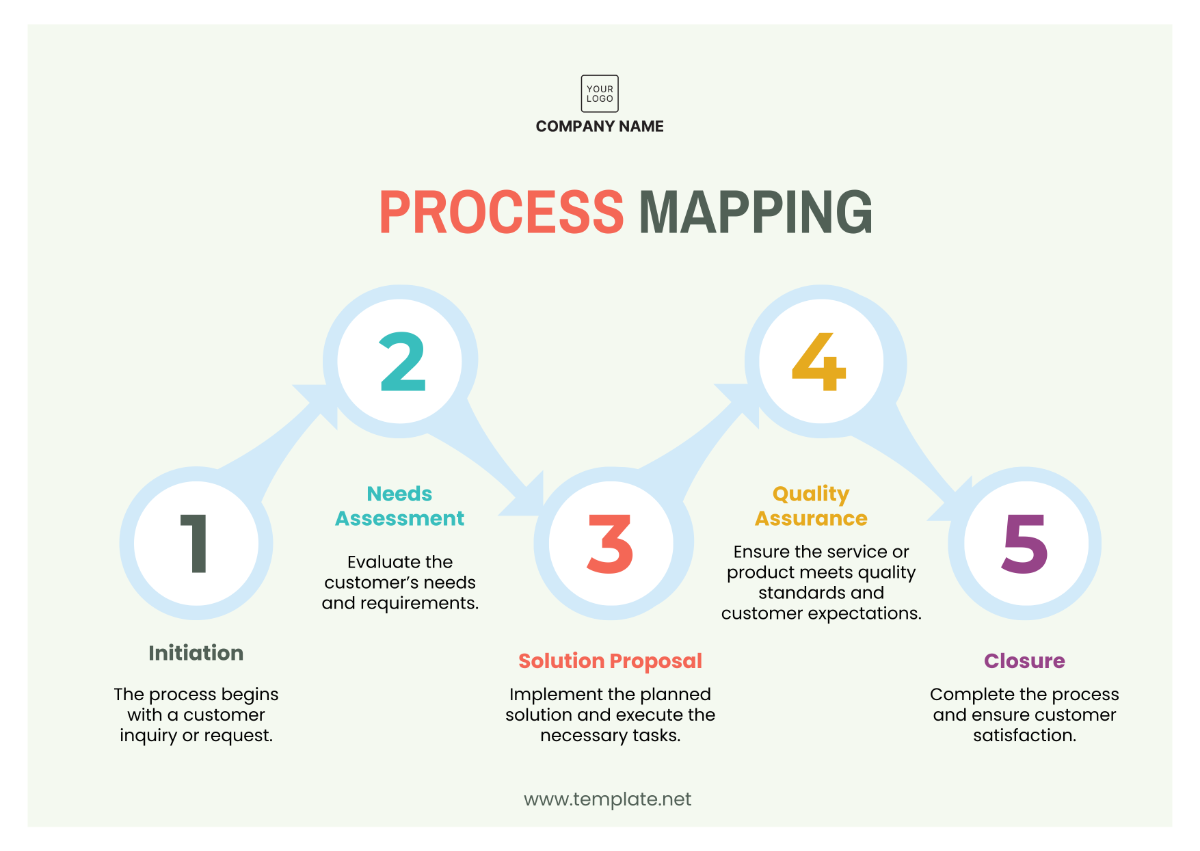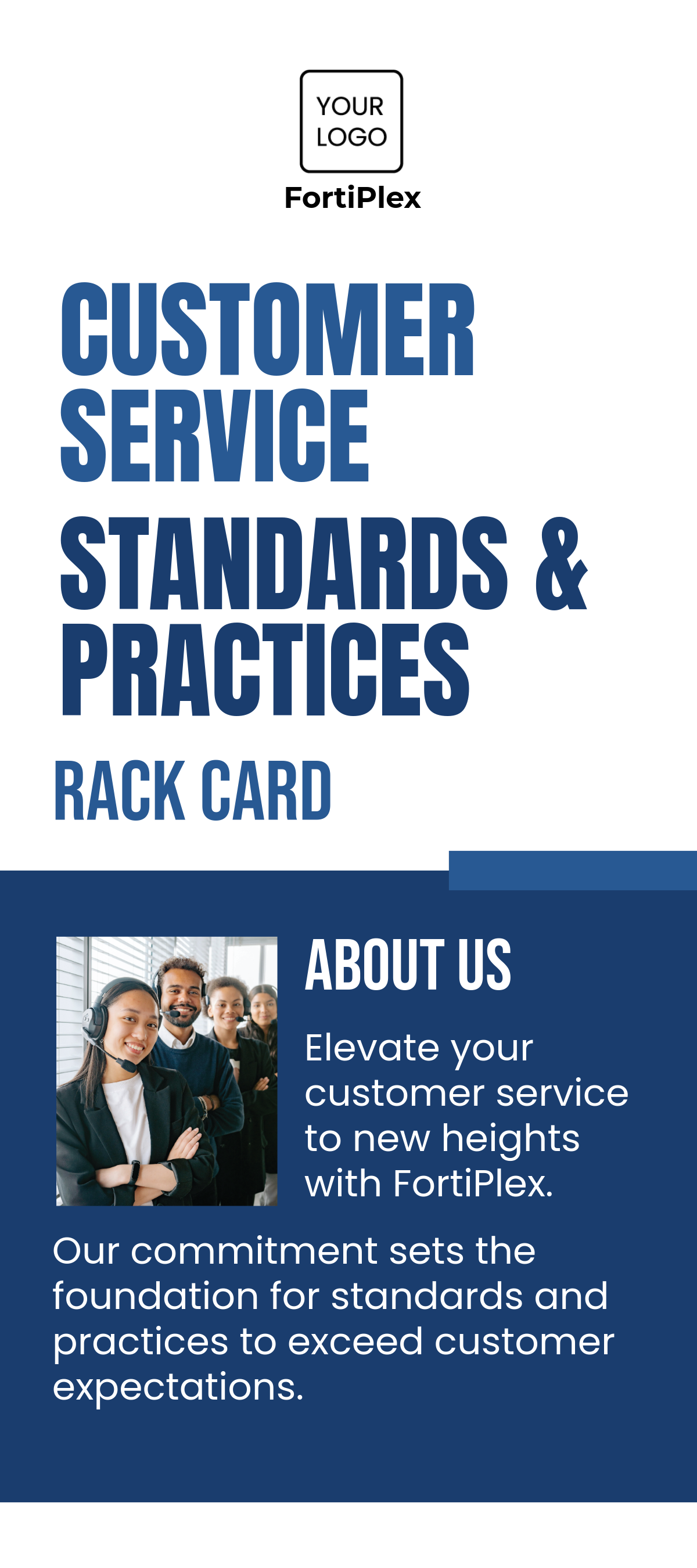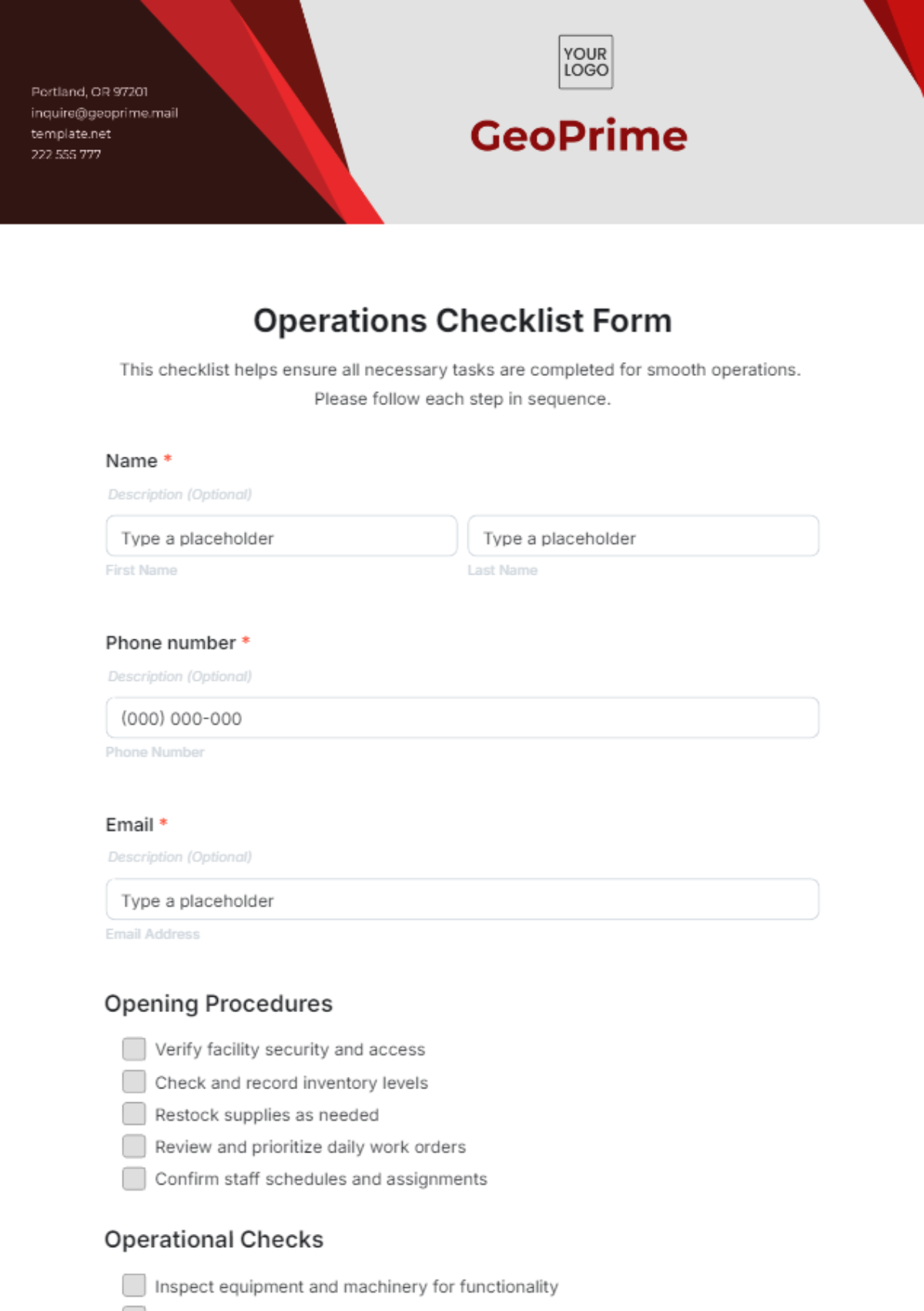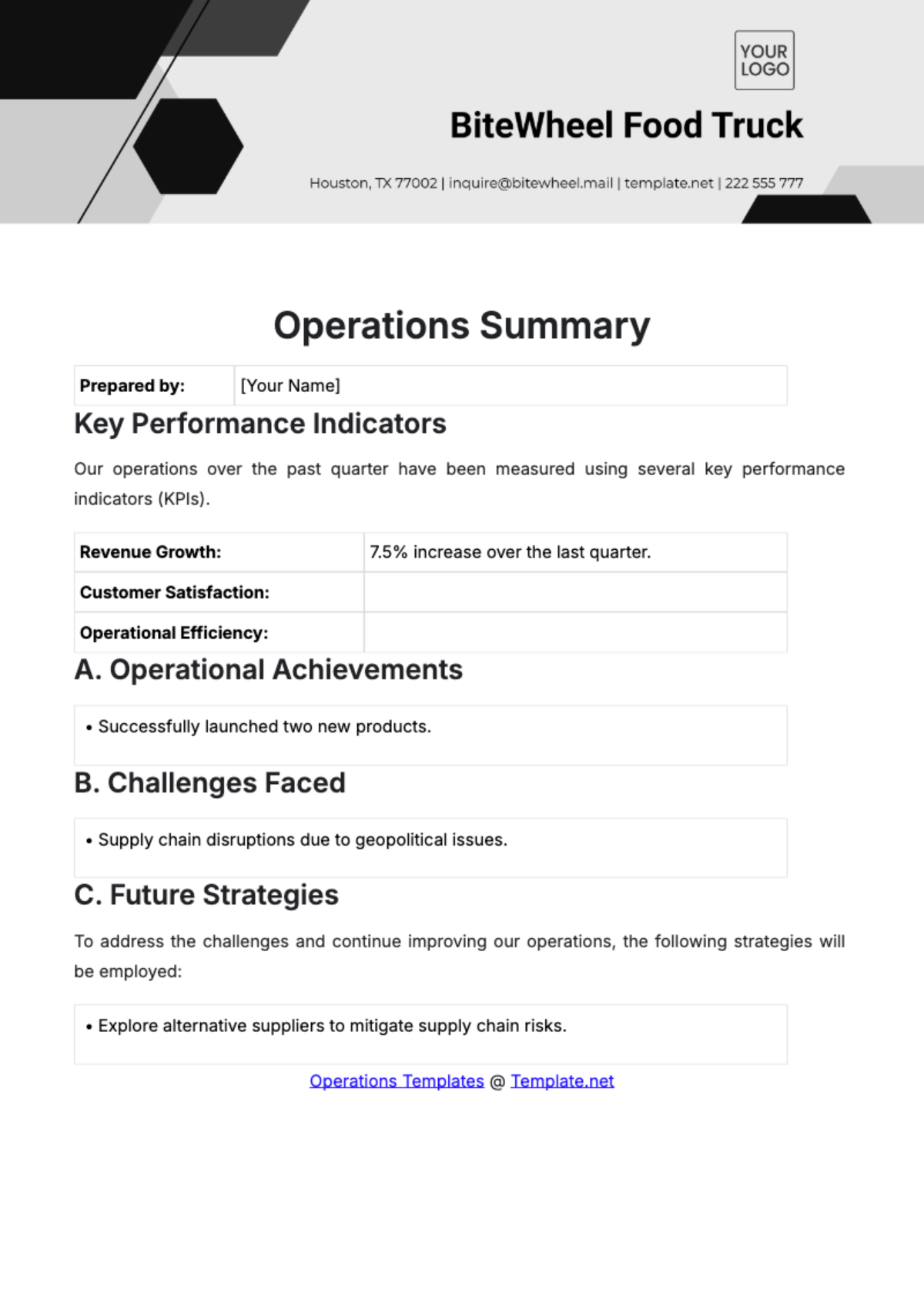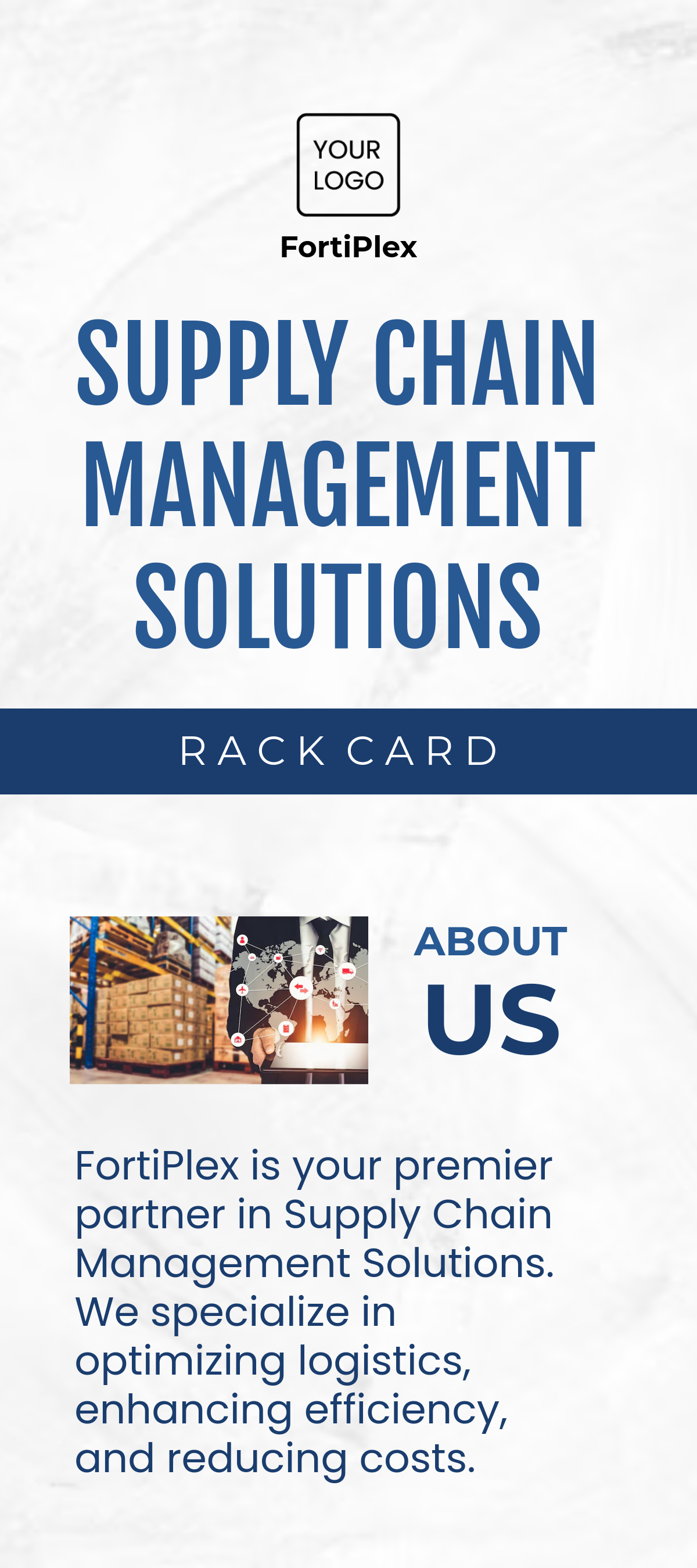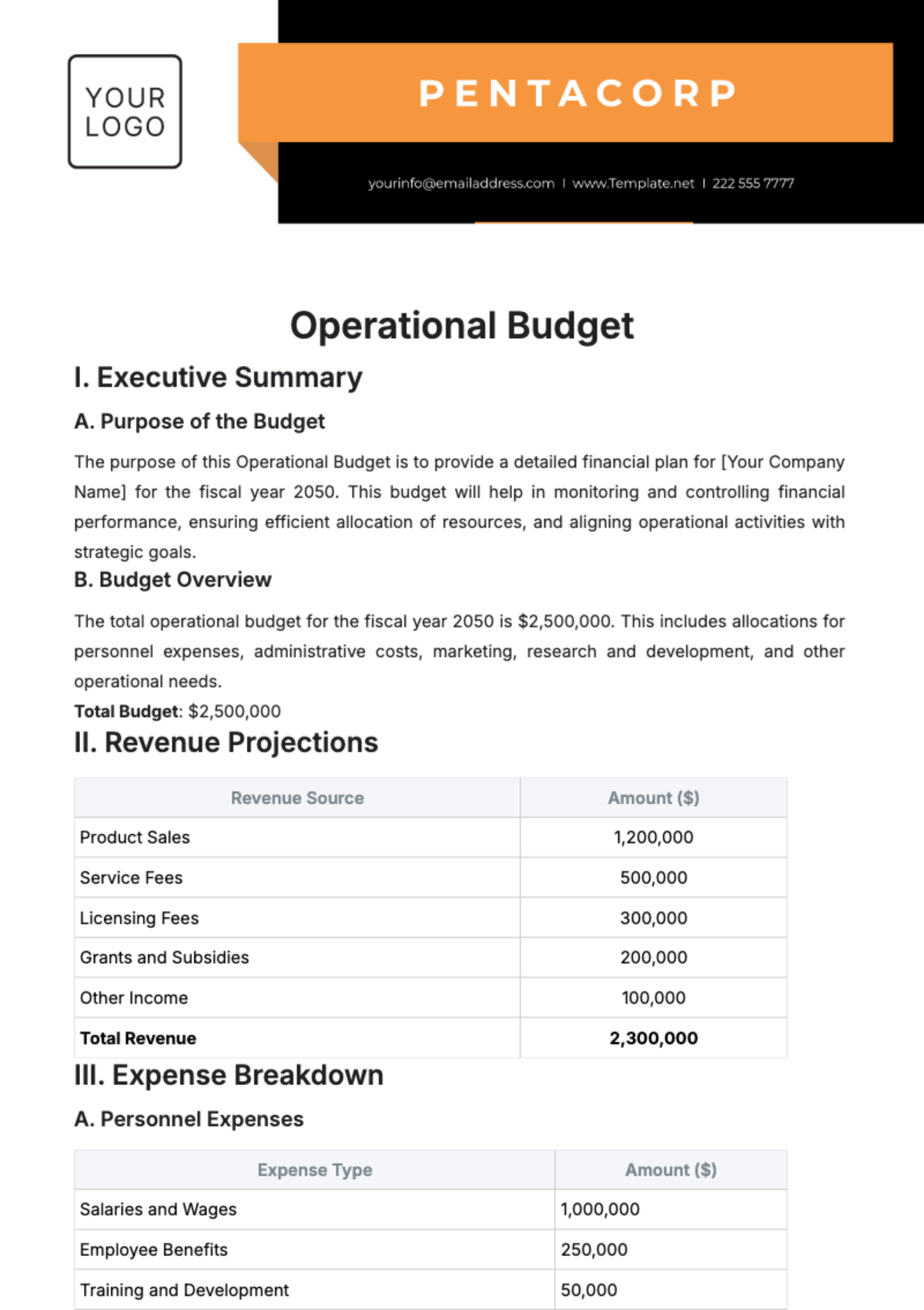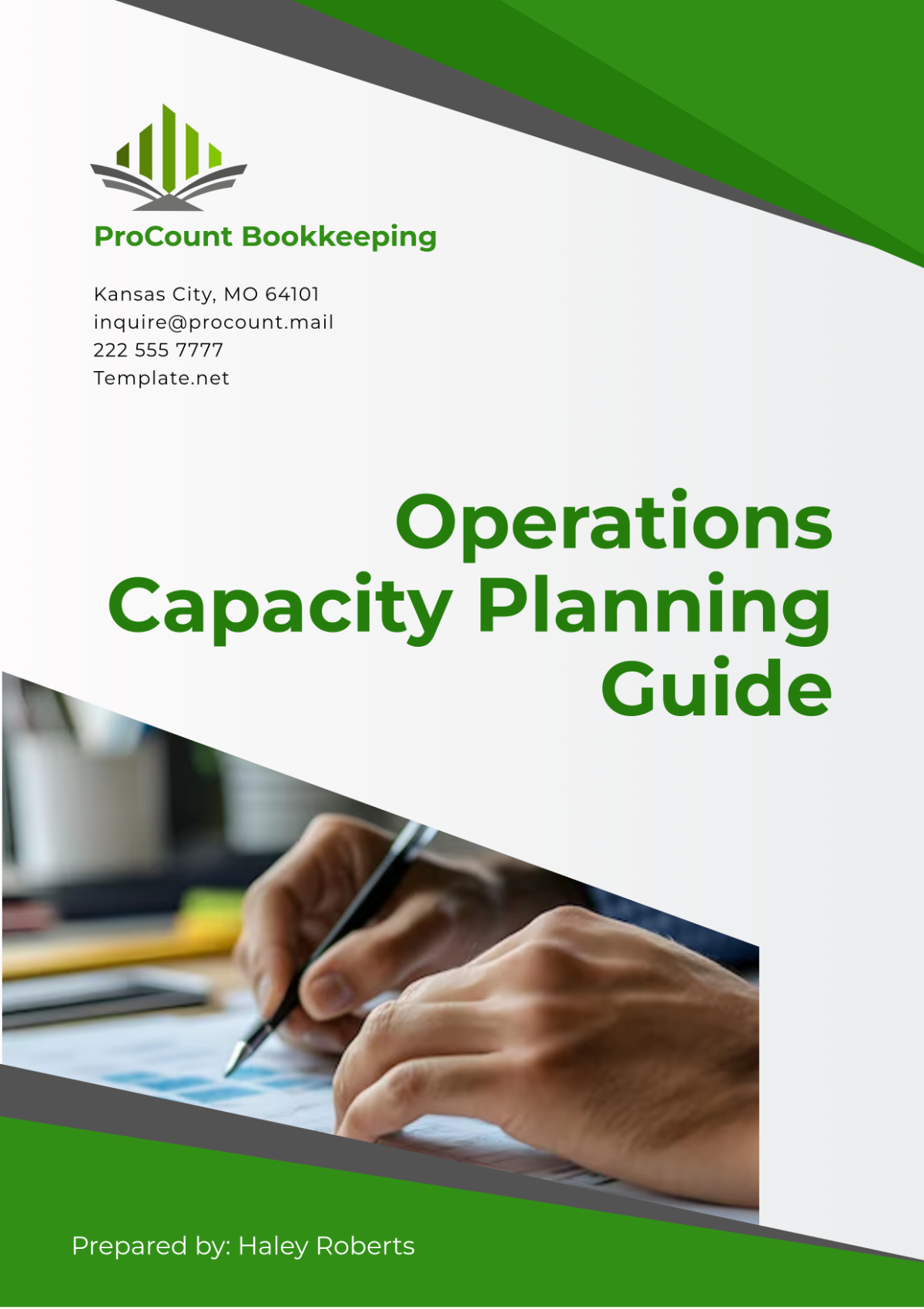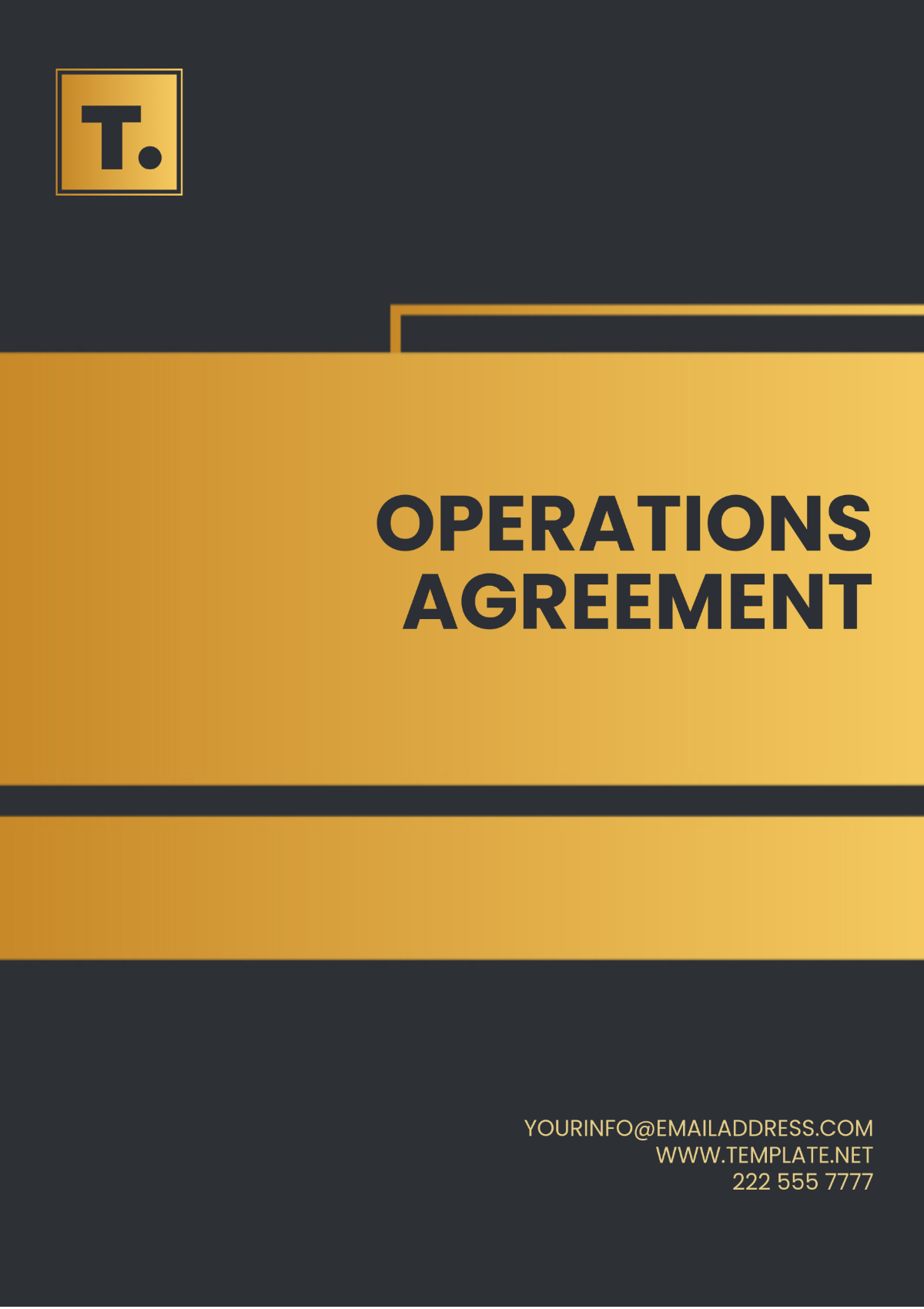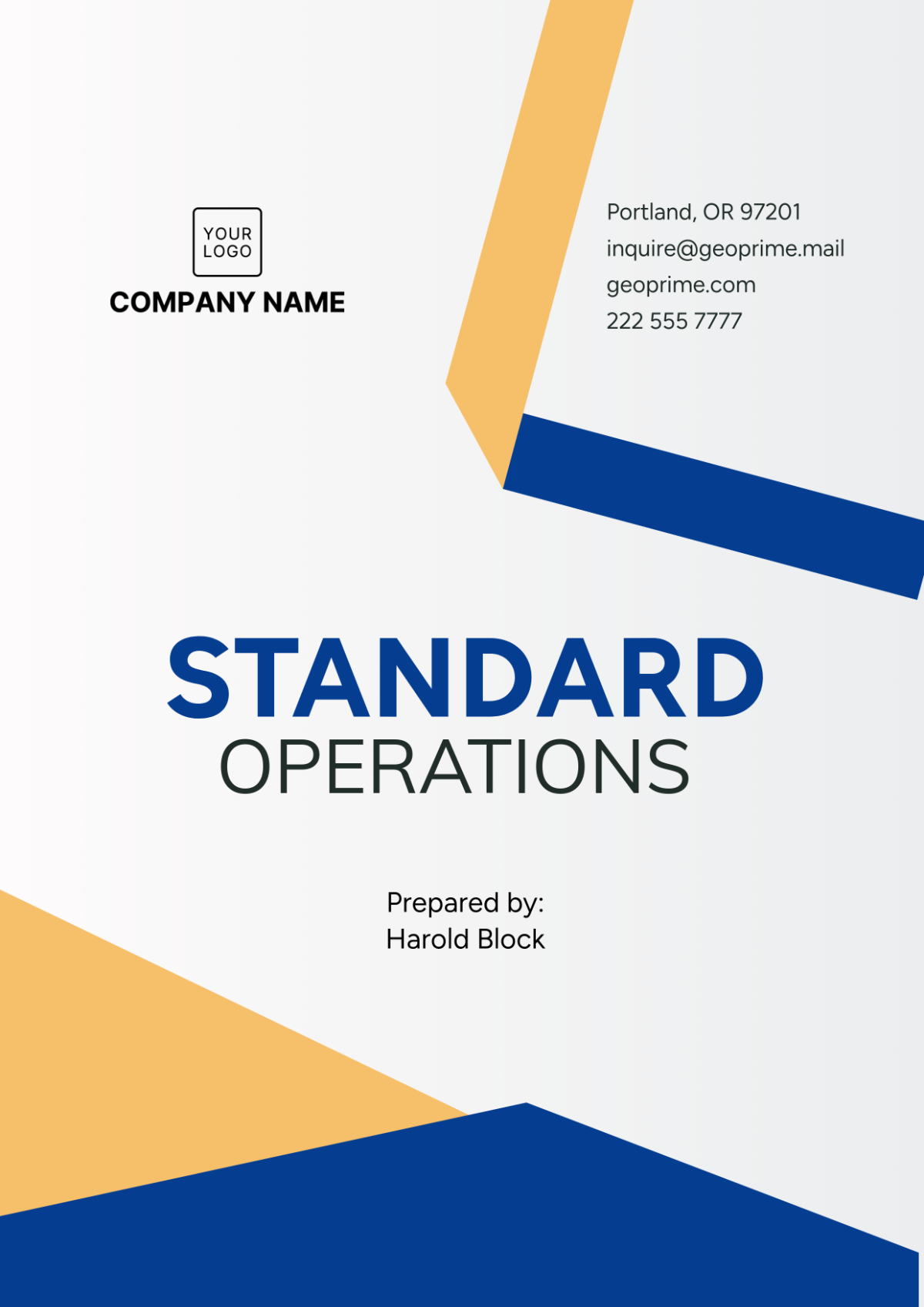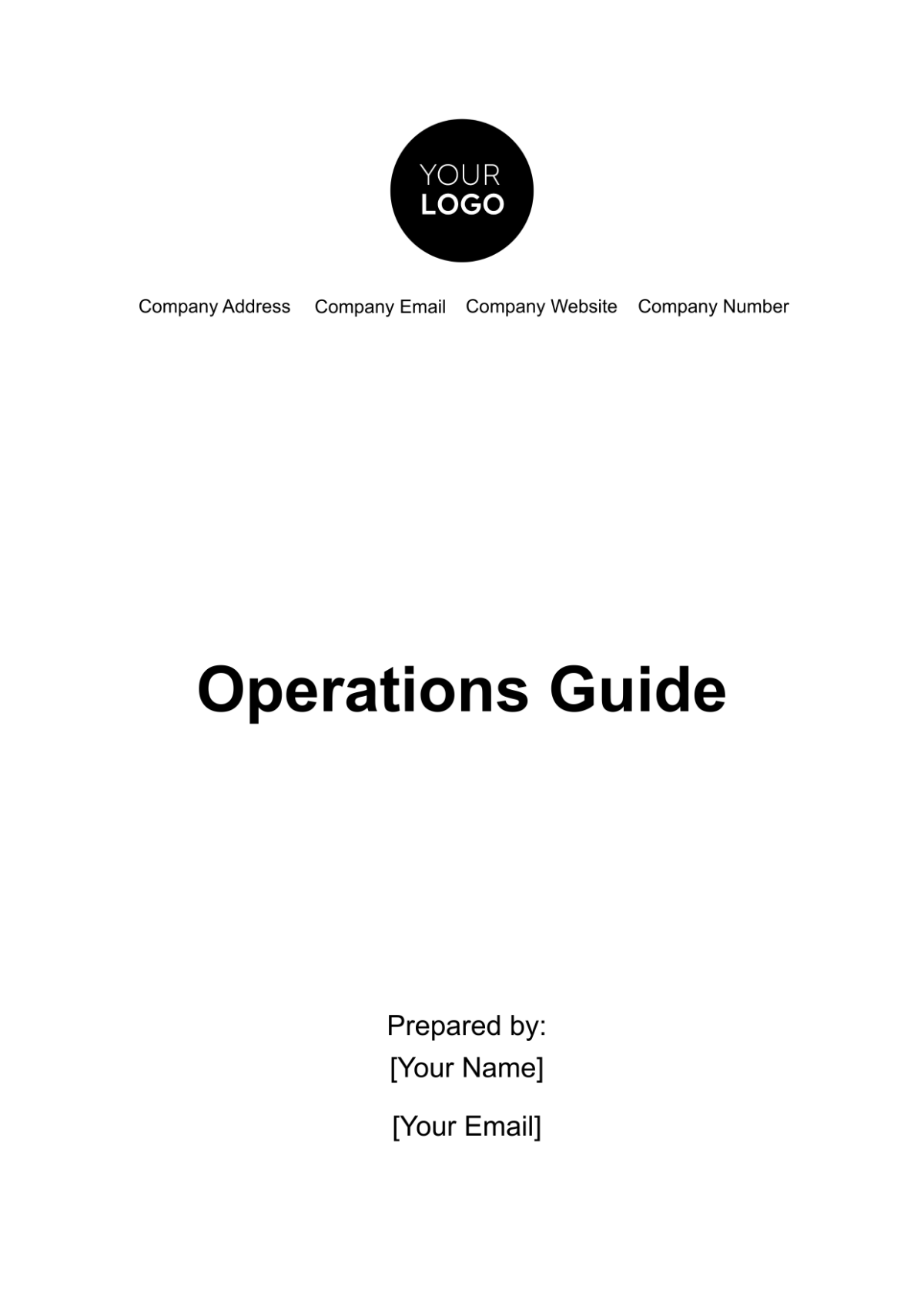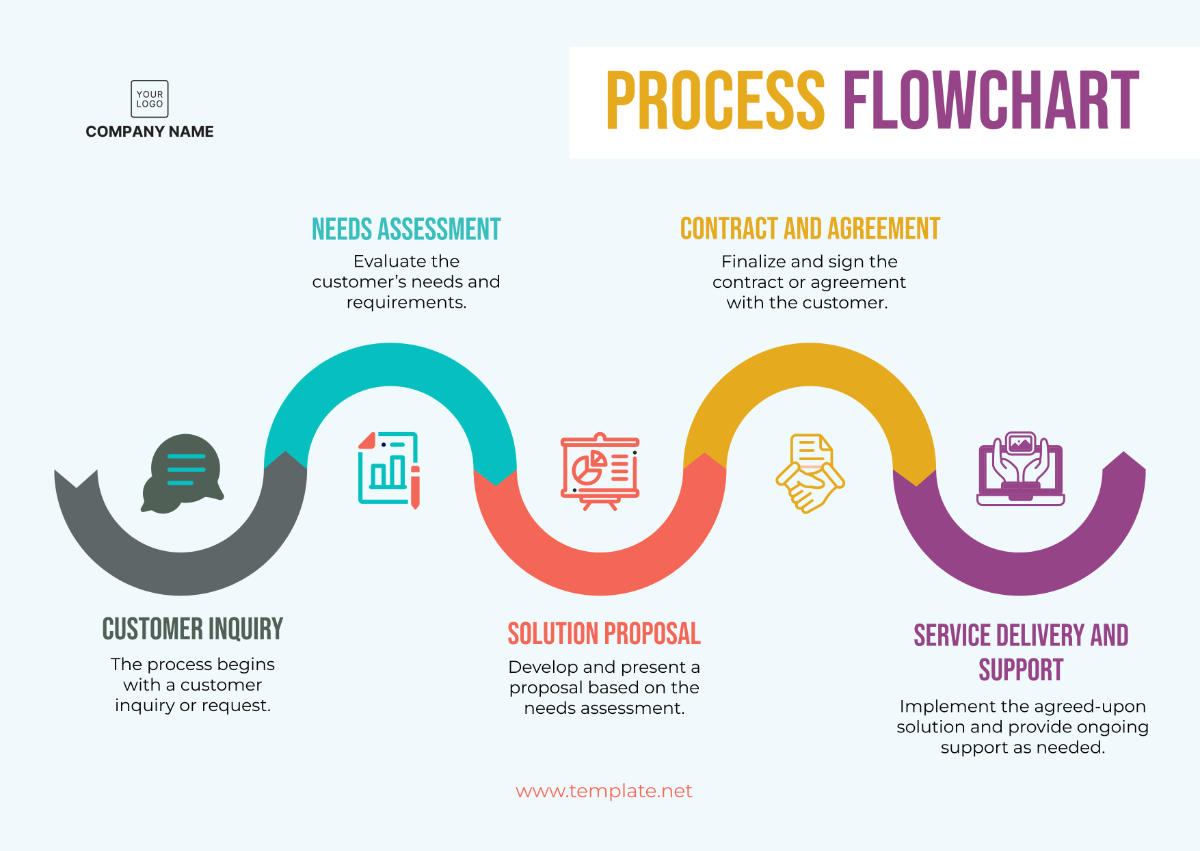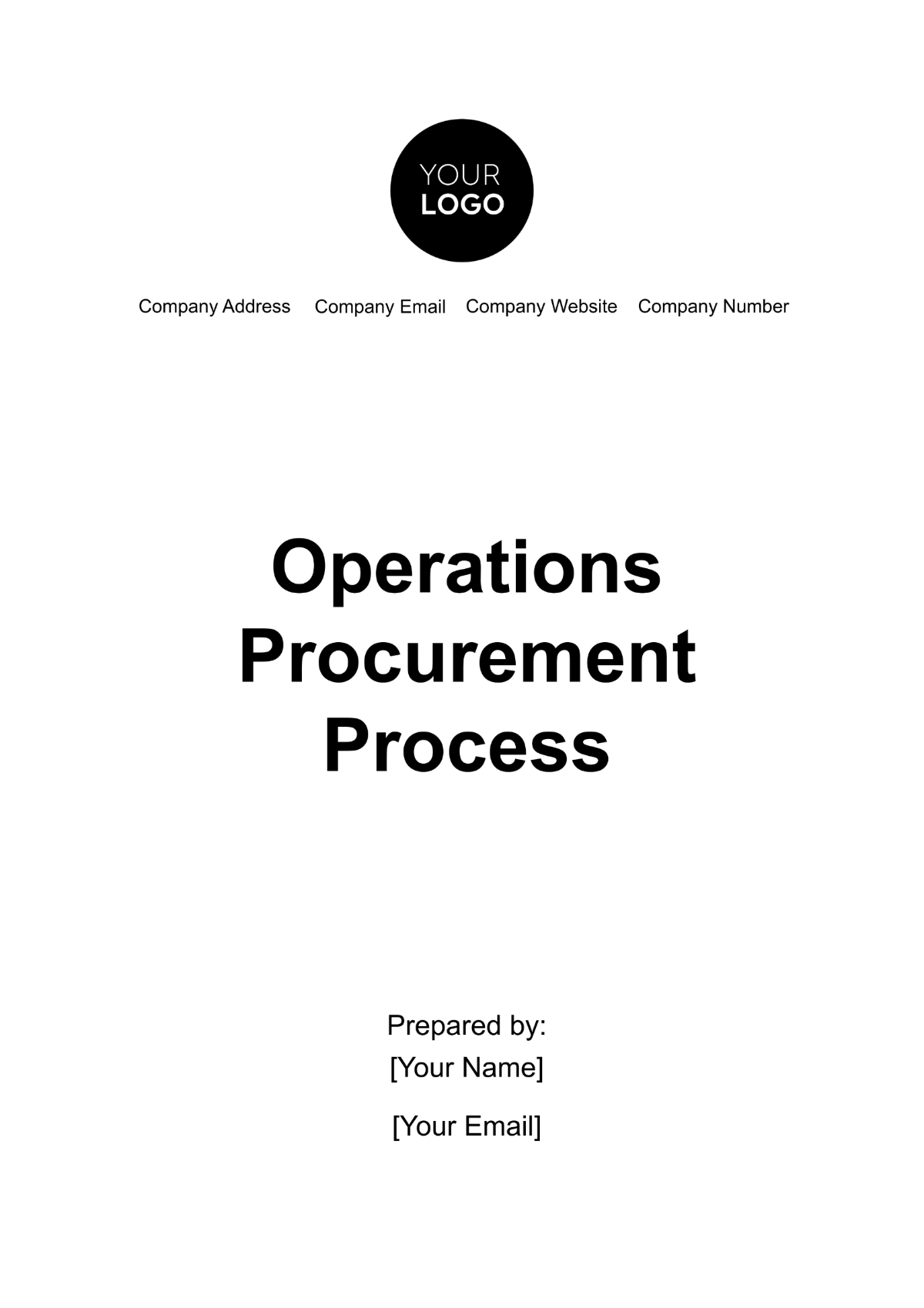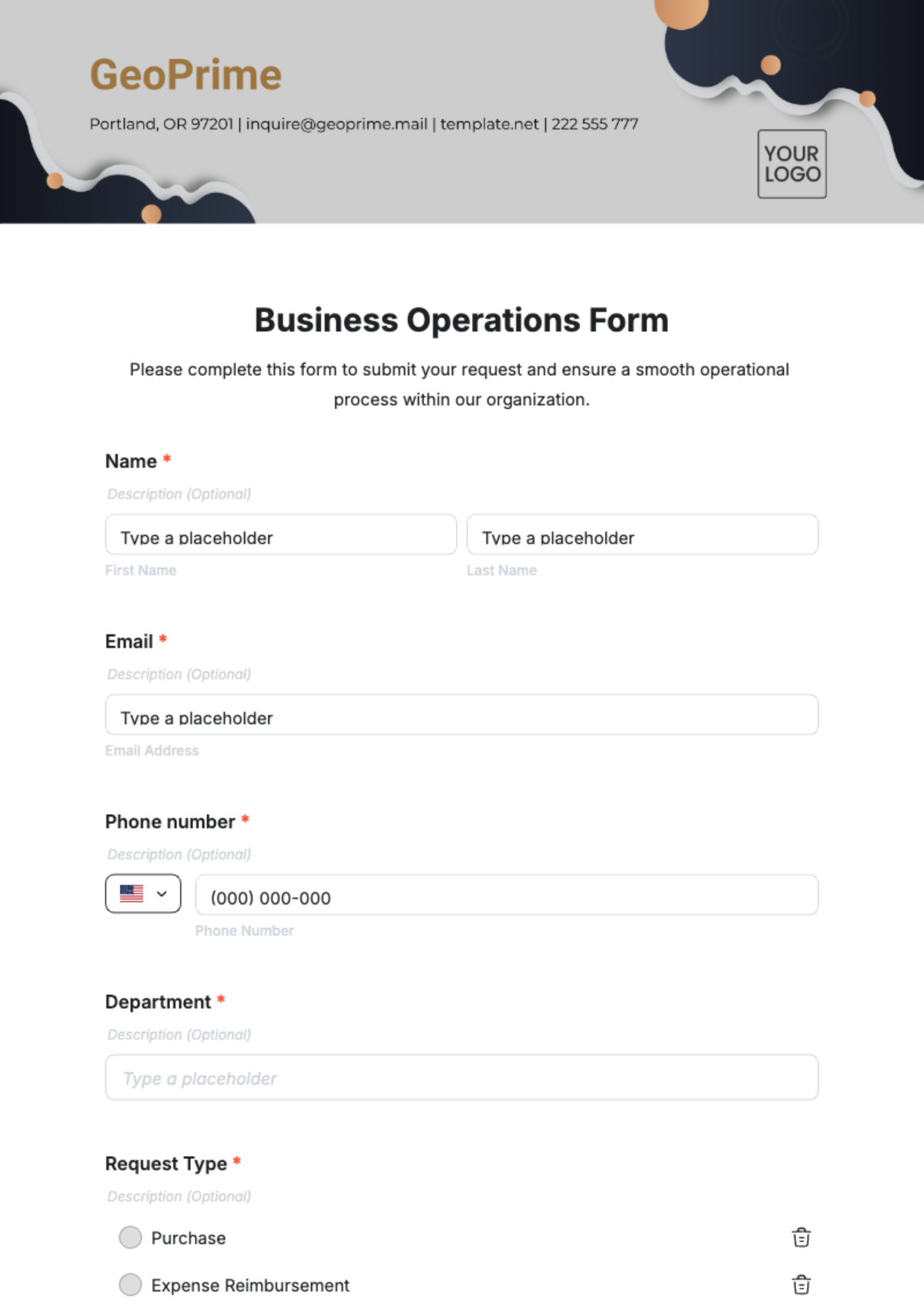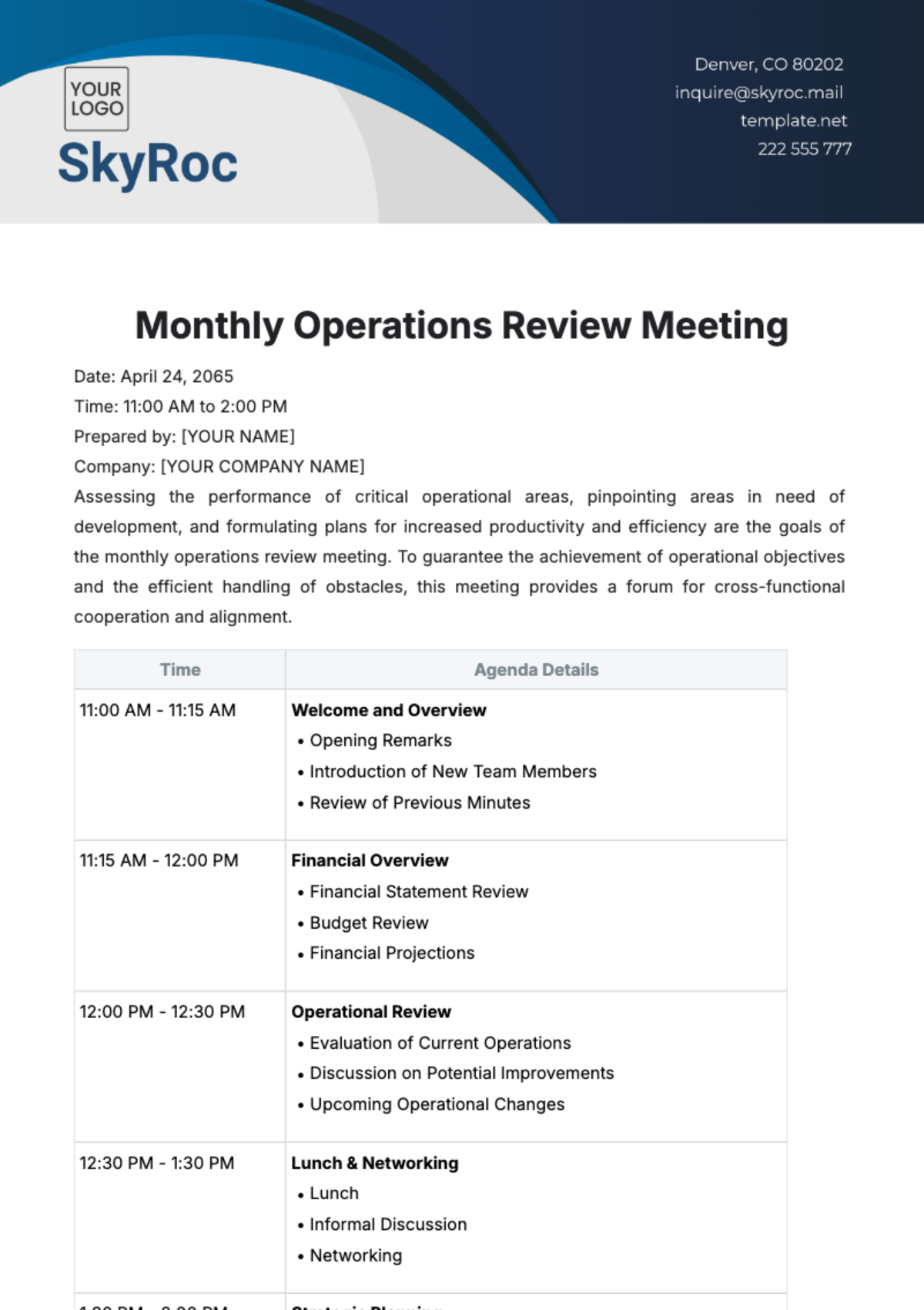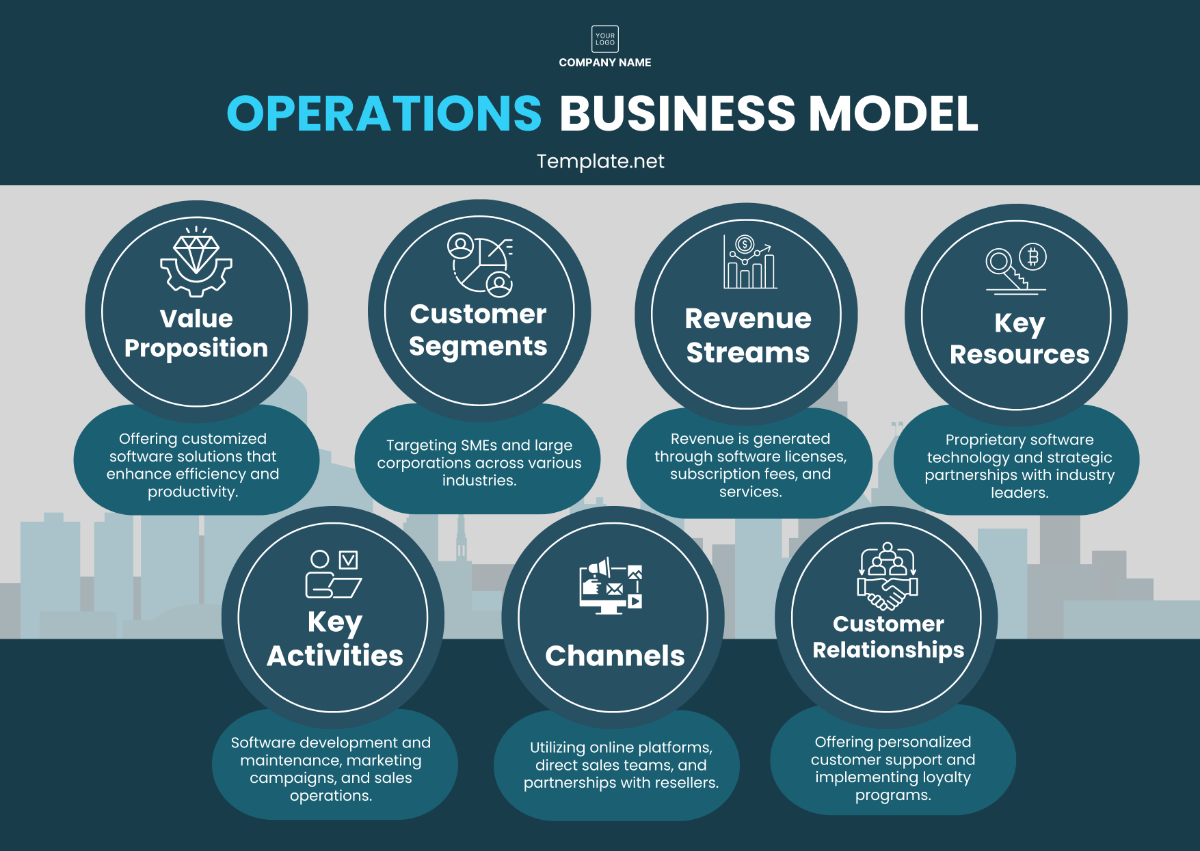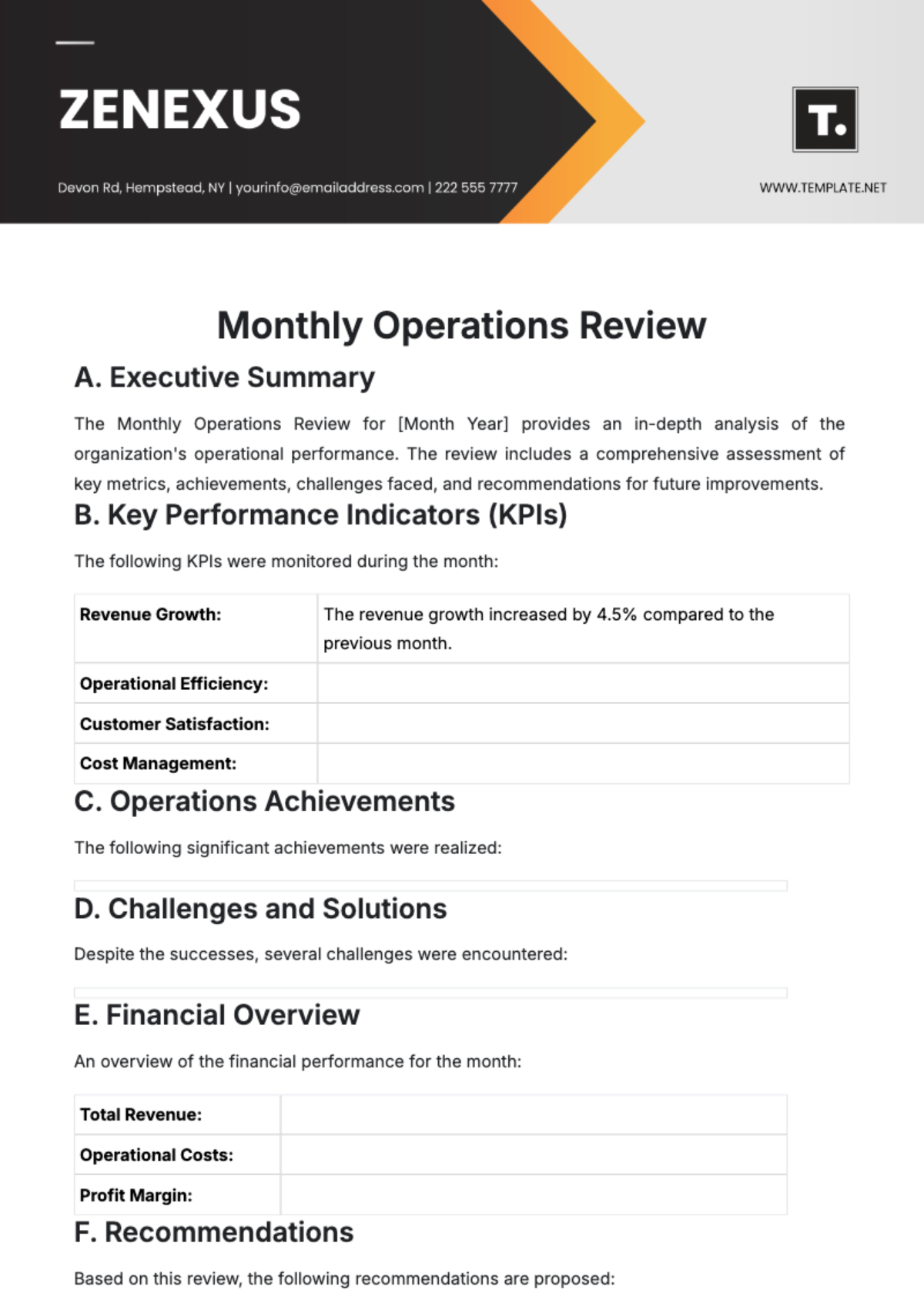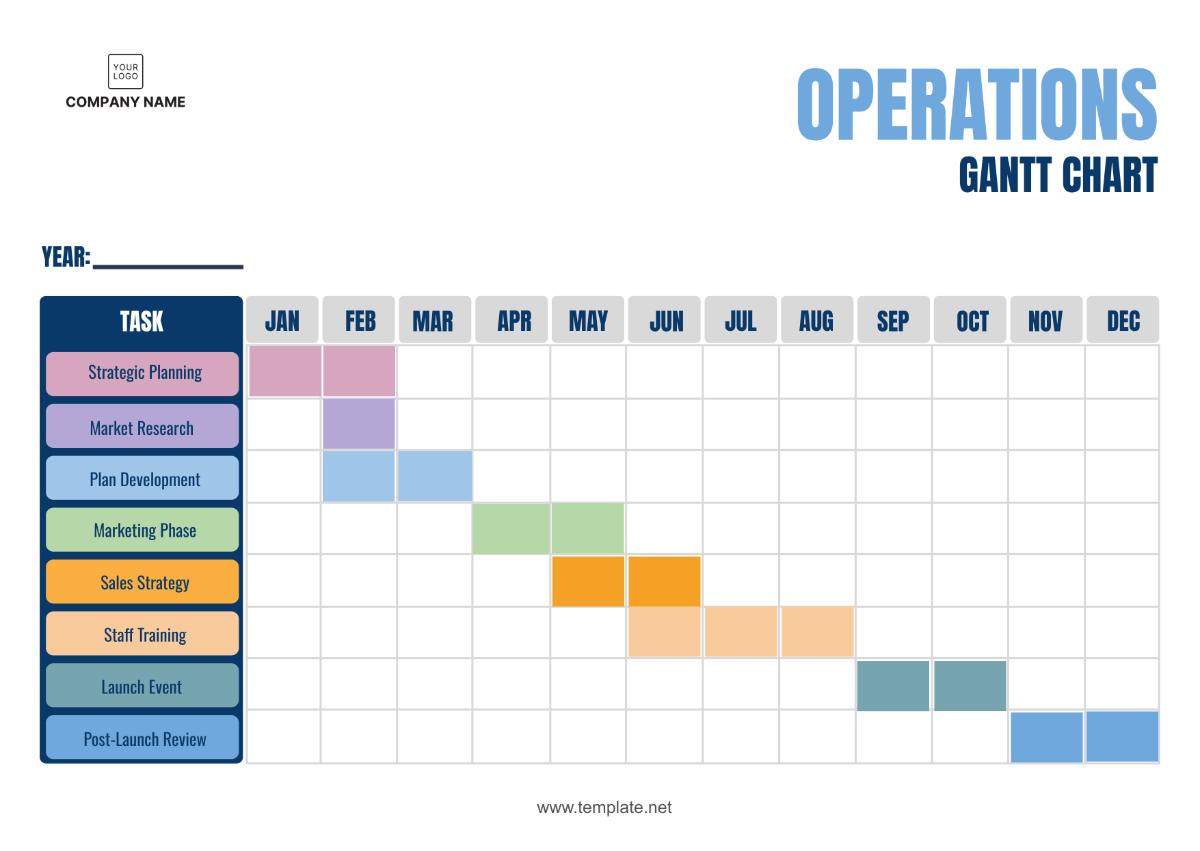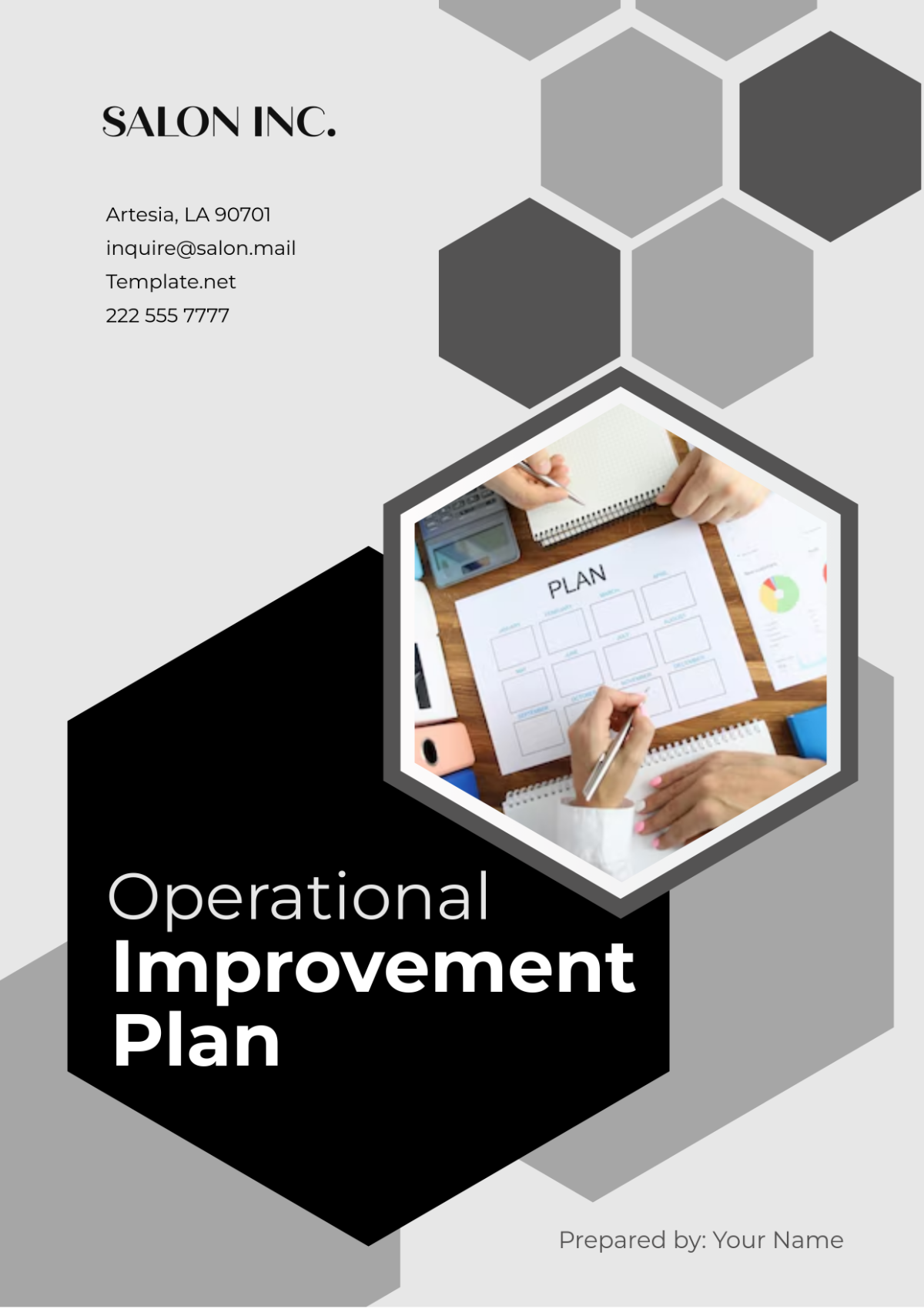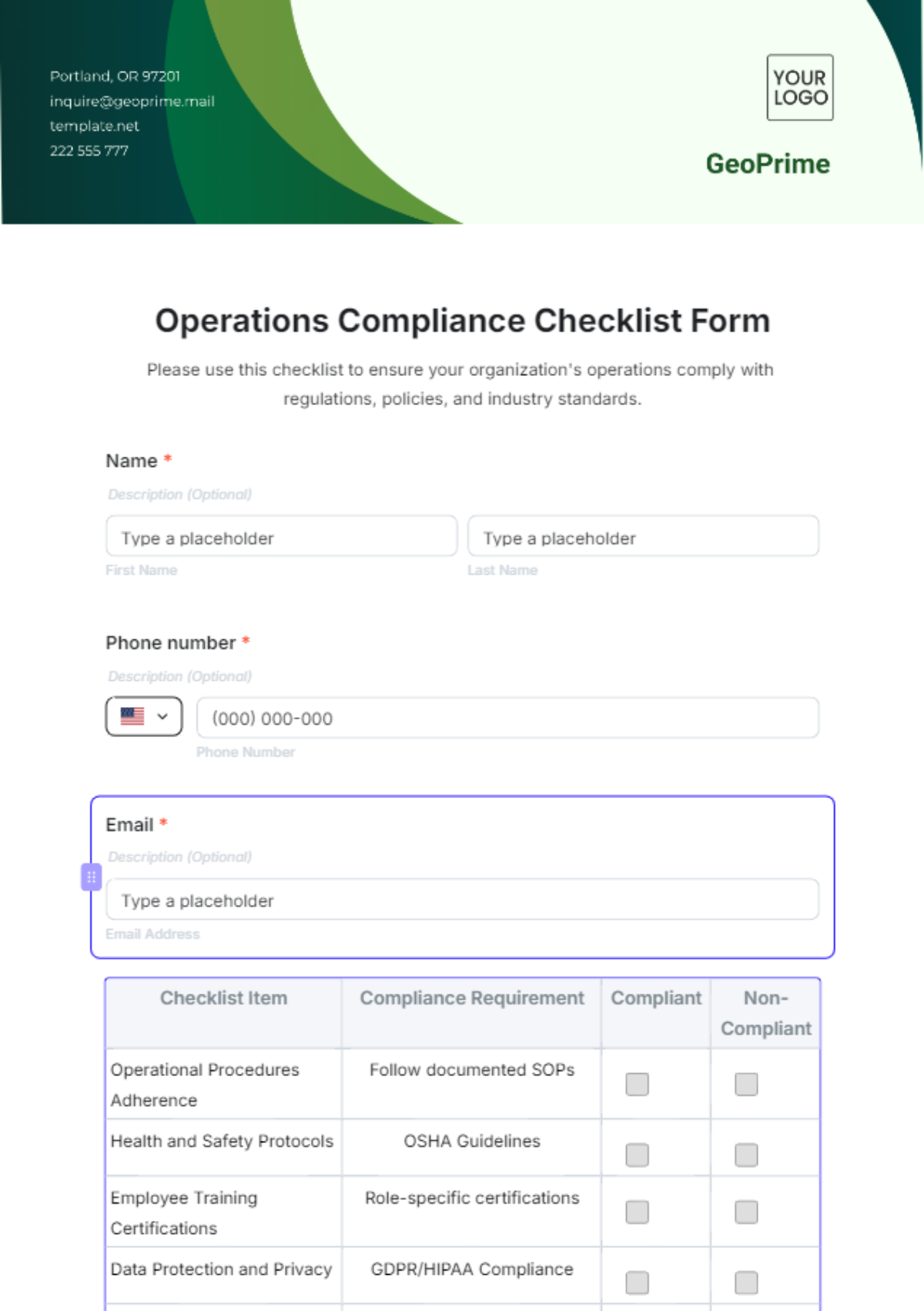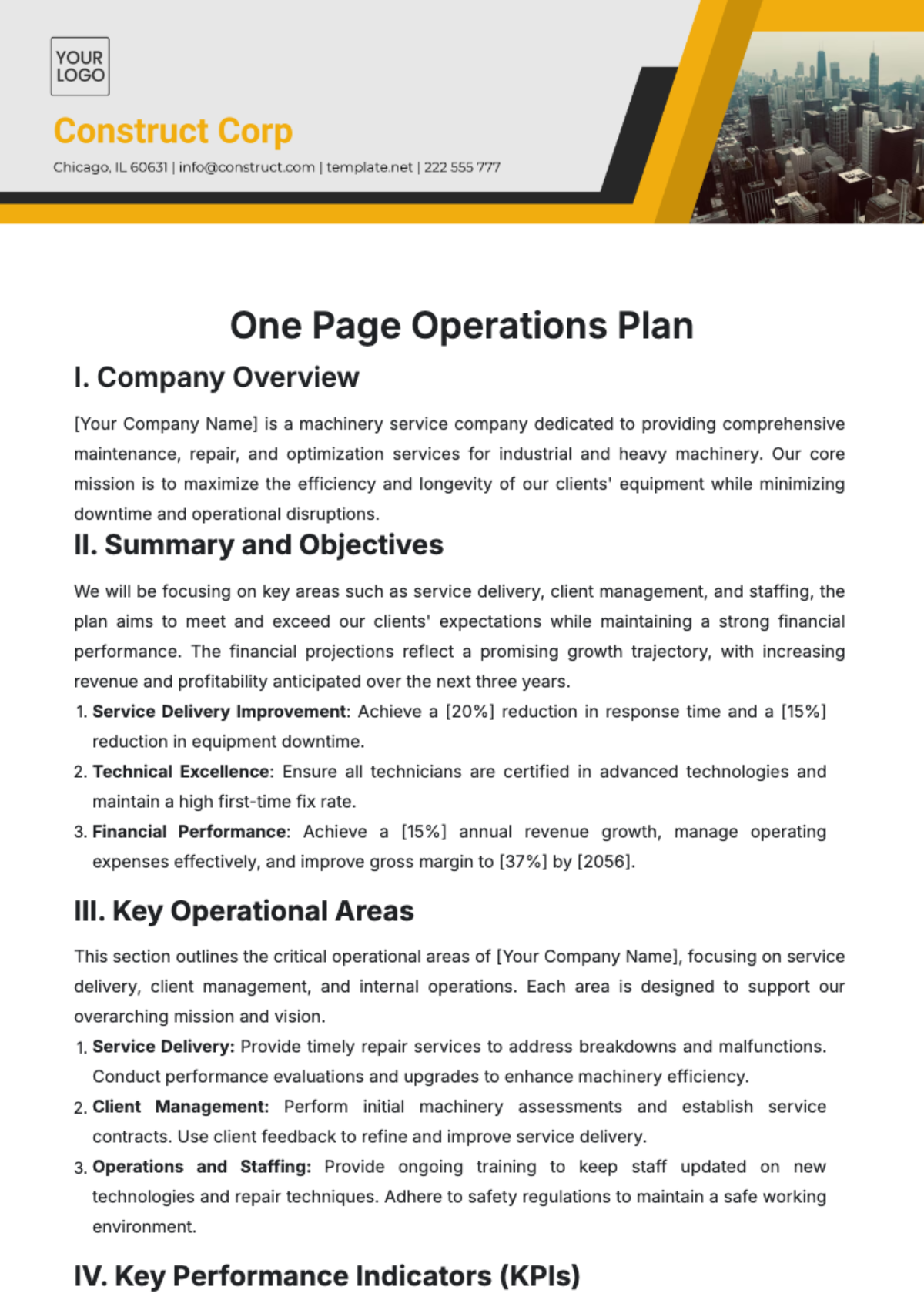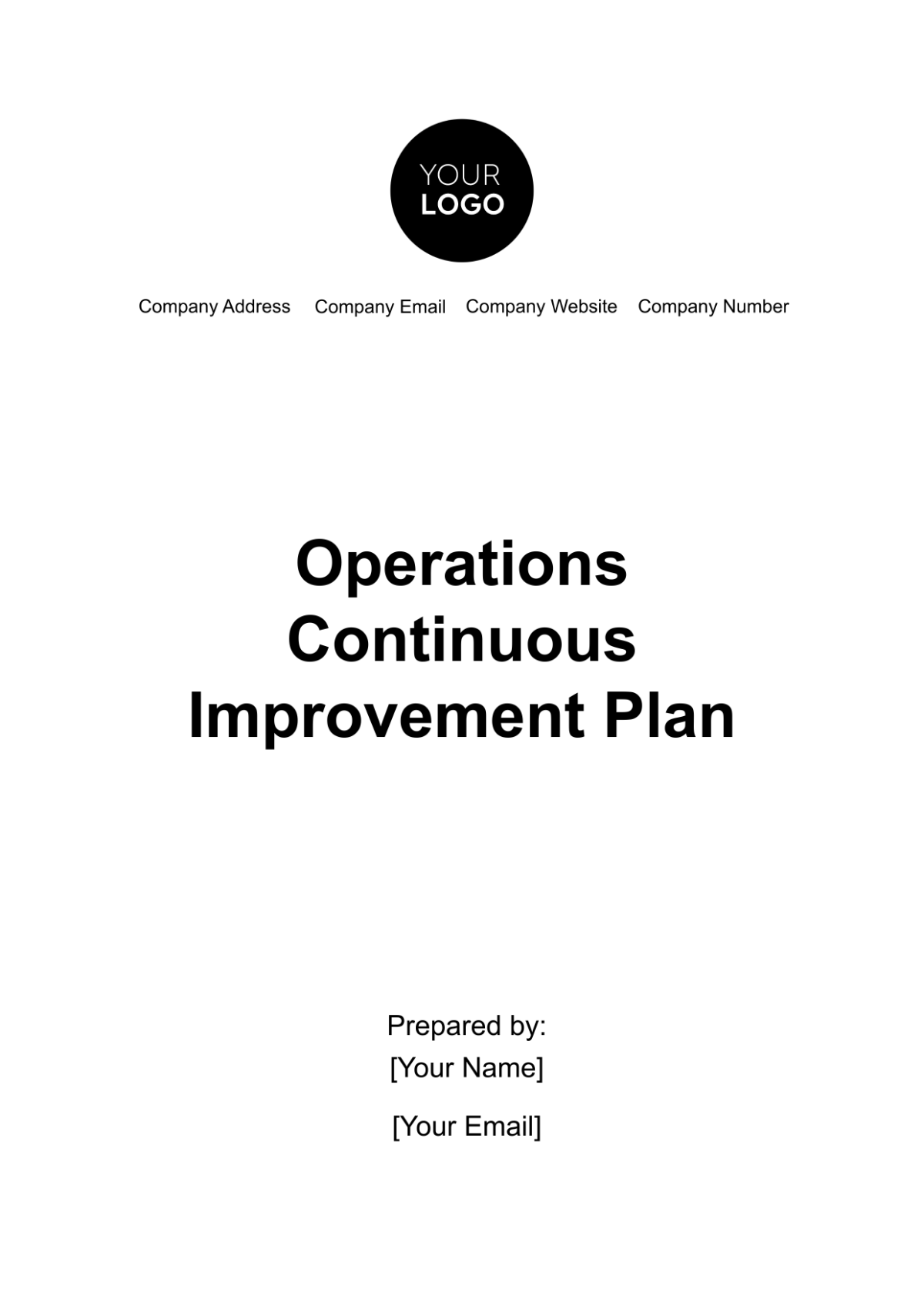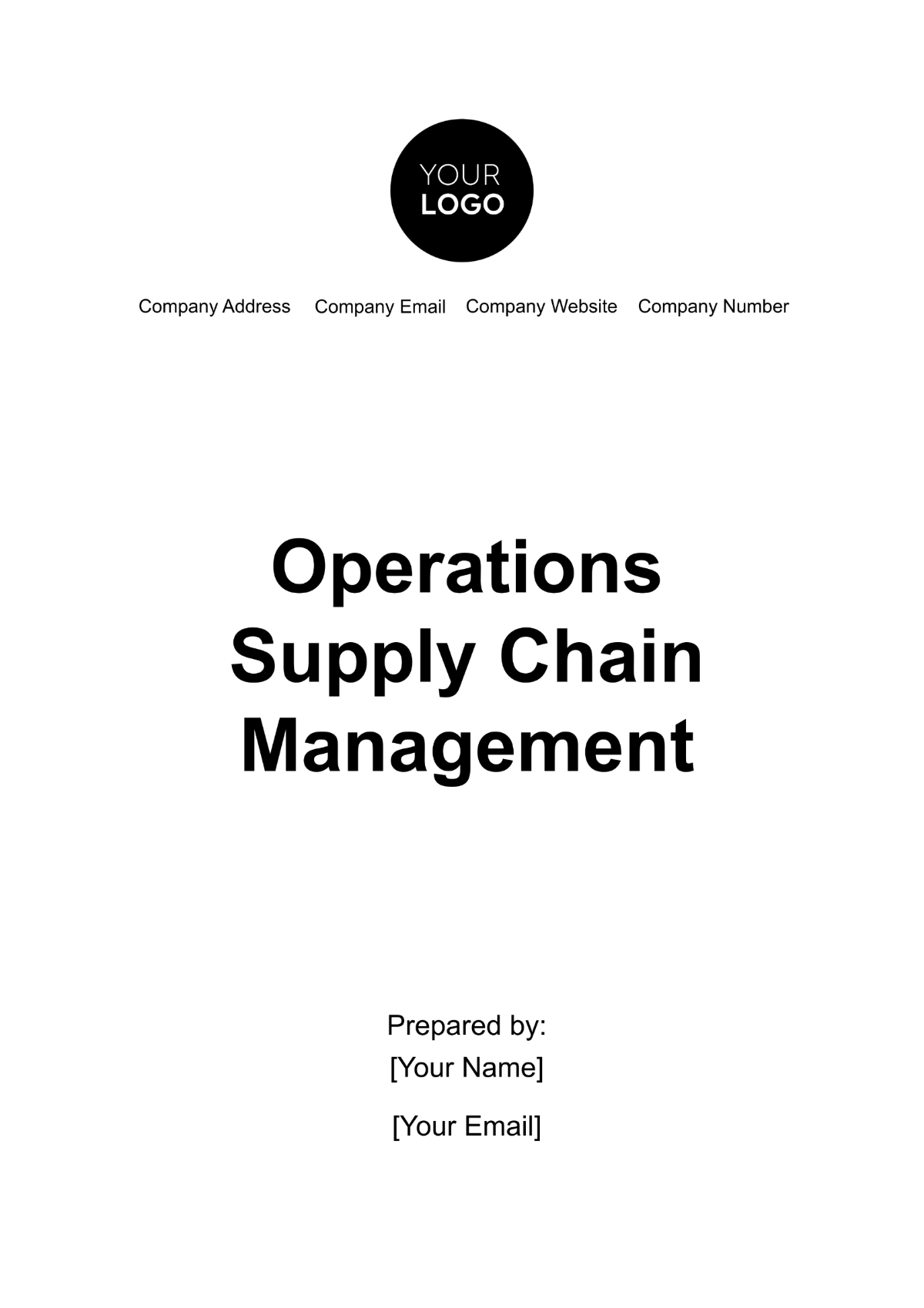Operations Third-Party Service Level Agreement (SLA)
This Operations Third-Party Service Level Agreement ("Agreement"), effective from [Month Day, Year], is entered into by and between [Your Company Name], located at [Your Company Address], hereinafter referred to as the "Service Provider," and [Your Partner Company Name / Second Party], located at [Your Partner Company Name / Second Party Address], hereinafter referred to as the "Customer".
1. Purpose
The purpose of this Agreement is to ensure that the proper elements and commitments are in place to provide consistent service support and delivery to the Customer by the Service Provider. The goal of this Agreement is to obtain mutual agreement for IT service provision between the Service Provider and the Customer.
2. Service to be Provided
The Service Provider, [Your Company Name], herein agrees to deliver high-quality Operations Third-Party Services, which are to be rendered in strict accordance with the specifications, terms, and conditions set forth in this Agreement. The purpose of these services is to bolster the Customer's, [Your Partner Company Name / Second Party], business operations, ensuring efficiency, reliability, and continuity. The scope of these services includes, but is not limited to, the following detailed provisions:
Operational Support Services: Provision of comprehensive operational support including management of systems and processes, data processing, and analysis, as well as the implementation of best practices to enhance the Customer's operational efficiency.
Technology and Infrastructure Management: Maintenance and management of technological infrastructure, including servers, networks, and software applications, to ensure high availability, security, and performance in line with the agreed-upon service levels.
Customer Support and Service Desk: Offering dedicated customer support and service desk solutions to address and resolve end-user issues promptly, thus minimizing downtime and enhancing user satisfaction.
Risk Management and Compliance: Implementation of robust risk management strategies and compliance measures to protect against operational risks and ensure adherence to relevant laws, regulations, and industry standards.
Continuous Improvement: Commitment to ongoing service improvement through the application of continuous improvement methodologies, such as Six Sigma or Lean, aimed at enhancing service delivery, efficiency, and customer satisfaction over the term of the Agreement.
Reporting and Analytics: Regular provision of detailed reports and analytics on service performance, incident management, and resolution, as well as operational insights that support strategic decision-making by the Customer.
Customized Solutions: Development and implementation of customized solutions tailored to meet the specific operational needs and challenges of the Customer, thereby providing a competitive edge in their market sector.
The Service Provider ensures that all services provided under this Agreement will be performed by qualified personnel, utilizing the latest appropriate technologies and methodologies, to achieve and maintain the service standards as defined herein. This commitment extends to all facets of the service provision, from initial consultation and planning through to execution, monitoring, and ongoing management.
[Your Company Name] and [Your Partner Company Name / Second Party] will collaborate closely to ensure that the services delivered not only meet but exceed the expectations and requirements laid out in this Agreement, thereby fostering a strong, productive, and mutually beneficial partnership.
3. Service Standards
The Service Provider commits to meeting the following service standards:
99.9% Uptime on an annual average, ensuring maximum reliability and minimal disruption.
Response Time: Guaranteed response within 1 business hour of receiving a query or notification of an issue.
Resolution Time: Issues will be resolved within 24 business hours, minimizing operational impact on the Customer.
4. Responsibilities
This section outlines the responsibilities that both the Service Provider, [Your Company Name], and the Customer, [Your Partner Company Name / Second Party], agree to undertake to ensure the successful delivery and operation of the services provided under this Agreement. These responsibilities are fundamental to maintaining a productive partnership and achieving the high service levels outlined in this Agreement.
4.1. Service Provider Responsibilities
The Service Provider is responsible for meeting the service levels outlined in this Agreement and for providing monthly performance reports to the Customer.
Meeting Service Levels: The Service Provider commits to achieving the service levels specified in this Agreement. This includes ensuring 99.9% uptime on an annual average, responding to service-related inquiries within 1 business hour, and resolving issues within 24 business hours.
Performance Reporting: The Service Provider shall furnish comprehensive monthly performance reports to the Customer. These reports will detail service performance against the agreed standards, including uptime statistics, response and resolution times, and any incidents or issues that have arisen and their resolution status.
Quality Assurance: Continuous monitoring and quality assurance processes will be implemented to ensure that all services provided meet the highest standards. This includes regular reviews of operational processes, customer feedback, and incident reports to identify areas for improvement.
Communication: Maintain open and effective channels of communication with the Customer to ensure that any issues or concerns can be promptly addressed and resolved.
Compliance and Security: Ensure compliance with all relevant laws, regulations, and standards, particularly in relation to data protection and security. Implement robust security measures to protect the Customer's data and operations from cyber threats.
4.2. Customer Responsibilities
The Customer is responsible for providing necessary information and access to resources as may be required to facilitate the services provided under this Agreement.
Provision of Information: The Customer is responsible for providing all necessary information and documentation that the Service Provider requires to effectively deliver the services. This includes, but is not limited to, operational data, access credentials, and system specifications.
Access to Resources: Granting the Service Provider access to relevant resources, including personnel, facilities, and technology, as may be required to facilitate the provision of services. This access must be provided in a timely and efficient manner to avoid delays in service delivery.
Feedback and Communication: Providing timely feedback on service performance and reporting any issues or concerns as they arise. The Customer is expected to engage in regular communication with the Service Provider to facilitate continuous improvement of the services.
Compliance and Security: Work in collaboration with the Service Provider to ensure compliance with relevant regulations and standards, particularly those relating to data protection and cybersecurity. The Customer is also responsible for maintaining the integrity of their own systems and data.
Both parties agree to perform their respective responsibilities with the utmost professionalism and dedication to ensure the successful implementation and operation of the services outlined in this Agreement. This collaborative effort is crucial for achieving operational excellence and maximizing the benefits derived from the services provided.
5. Governance
This Agreement and its interpretation, and any disputes arising under or in relation to this Agreement, shall be governed by and construed in accordance with the laws of [State]. Both parties agree to attempt to resolve any disputes through good faith negotiations before resorting to arbitration or litigation.
6. Performance Measurements
To ensure transparency and accountability in the delivery of the Operations Third-Party Services, [Your Company Name], the Service Provider, commits to a rigorous performance measurement and reporting protocol. This protocol is designed to provide [Your Partner Company Name / Second Party], the Customer, with clear, actionable insights into the effectiveness and efficiency of the services provided under this Agreement. The performance measurement framework encompasses the following key components:
Monthly Performance Reports: The Service Provider shall compile and deliver detailed monthly performance reports to the Customer. These reports are crucial for assessing the Service Provider's adherence to the agreed service standards and for identifying areas of success and opportunities for improvement.
Service Performance Data: Included in each monthly report will be comprehensive service performance data. This data will cover all aspects of the service delivery, including, but not limited to:
Uptime statistics and availability of services.
Response times against the target of 1 business hour.
Resolution times in comparison to the 24 business hours objective.
Incident and issue management, including the number of incidents, their severity, the resolution process, and the outcomes.
Customer satisfaction metrics, gathered through feedback and surveys.
Benchmarking Against Agreed Service Standards: Each aspect of service performance data provided will be benchmarked against the service standards agreed upon in this Agreement. This benchmarking will highlight how well the Service Provider is meeting its commitments and where any discrepancies lie.
Analysis and Recommendations: Beyond merely reporting on data, the monthly performance reports will include an analysis of the trends observed over the reporting period. This analysis will be used to draw insights and make recommendations for service improvement, efficiency gains, and how to better meet the Customer's needs.
Review and Planning Meeting: Accompanying the delivery of each monthly performance report, the Service Provider proposes to conduct a review meeting with the Customer. This meeting will serve as a platform to discuss the findings of the report, address any concerns, and plan for any adjustments in service delivery or focus areas for the upcoming period.
7. Penalties
In the event that [Your Company Name], the Service Provider, fails to meet the service levels as expressly outlined in this Agreement, it acknowledges that such failure may significantly impact [Your Partner Company Name / Second Party], the Customer's, operations and, as such, agrees to the imposition of financial penalties. The framework for these penalties is designed to ensure accountability and motivate adherence to the agreed-upon service standards. The following outlines the approach to determining and implementing these penalties:
Severity-Based Penalty Structure: The penalties will be structured based on the severity of the breach of service levels. This structure will take into account factors such as the duration and impact of downtime, the nature of the service affected, and the response and resolution times in instances of service disruptions.
Mutual Agreement on Penalties: The specific amounts and conditions under which penalties will be applied shall be determined through mutual agreement between the Service Provider and the Customer at the outset of this Agreement. This agreement will include a detailed penalty matrix that outlines the financial implications for various levels of service breaches.
Calculation and Implementation: Penalties will be calculated based on the agreed-upon matrix, and their imposition will follow a transparent process that involves:
Notification by the Customer of a service level breach.
Verification of the breach by reviewing performance reports and data logs.
Calculation of the penalty as per the pre-agreed matrix.
Formal communication to the Service Provider regarding the penalty amount and the rationale for its imposition.
Review and Adjustment: Both parties agree to periodically review the penalty structure to ensure that it remains fair, relevant, and effective in motivating high service levels. Adjustments may be made based on changes in the service scope, the introduction of new technologies, or significant shifts in the operational environment of the Customer.
Penalty Caps: To maintain a balanced and fair relationship, there will be a cap on the total penalties that can be imposed within a given period. This cap ensures that while accountability is maintained, the focus remains on remediation and continuous improvement rather than punitive measures alone.
Reinvestment in Service Improvement: The Service Provider may propose, and the Customer may agree, that a portion of the penalties be reinvested in specific service improvement initiatives aimed at addressing the root causes of the breaches. This approach aligns both parties towards a common goal of enhanced service quality and reliability.
8. Limitation of Liability
It is agreed that neither party shall be liable to the other for any indirect, special, consequential, incidental, punitive, or exemplary damages arising out of or in connection to this Agreement or the services provided.
9. Term and Termination
This Agreement will commence on [Month Day, Year] and will remain in effect for a period of 12 months. Either party may terminate this Agreement by providing 30 days written notice to the other party.
IN WITNESS WHEREOF, the parties have executed this Agreement as of the date first above written.
For the Service Provider:
Signature: [Your Signature]
Name: [Your Name]
Title: [Your Job Title]
Date: [Date]
For the Customer:
Signature: [Signature]
Name: [Your Client Representative]
Title: [Job Title]
Date: [Date]



